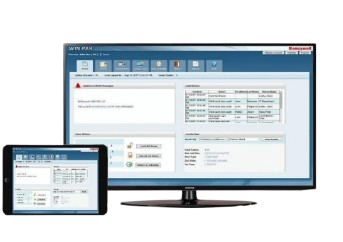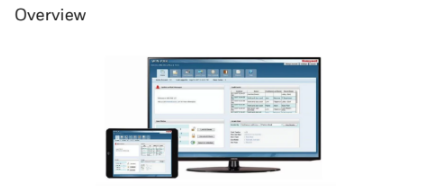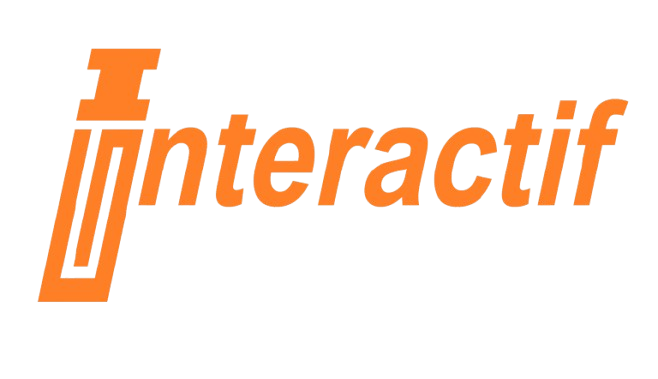SME OFFICES

WIN-PAK Integrated Security Software
PRODUCT DESCRIPTION
WIN-PAK 4.9 provides an intuitive browser-based interface allowing users to perform common access control actions virtually enabled with
Video verification and surveillance, secured by Intrusion detection system and Fire notifications. WIN-PAK 4.9 can be easily scaled from a single
site up to a multi region and offers a low-end enterprise-level solution with multiple Accounts and Sub Accounts, all without placing restrictions
on the number of users or sites being managed. WIN-PAK’s web browser allows customers to manage their system using any standard web
browser including iOS and AndroidTM mobile/tablet browsers.
WIN-PAK Integrated Security Software

Honeywell’s WIN-PAK® 4.9 Integrated Security software solution provides a cost-effective way to manage access control, video surveillance, and intrusion detection through a single interface
WIN-PAK 4.9 provides an intuitive browser-based interface allowing users to perform common access control actions, integrated with video verification and surveillance, secured by intrusion detection systems and fire notifications. It can scale seamlessly from a single site to multi-region deployments, offering a low-end enterprise-level solution with support for multiple accounts and sub-accounts, without limiting the number of users or managed sites. WIN-PAK’s web browser interface enables system management using any standard web browser, including iOS and Android™ mobile/tablet browsers.
WIN-PAK 4.9 supports direct integration with HID’s Origo 2.0 Mobile Access® and Suprema Biometrics® (Enrollment and Configuration).
Features & Benefits:
- Bundled offering with MAXPRO VMS in Standard and Professional Edition
- Latest Mercury-powered Series 3 controller support with PRO42IC and PRO42 SIOs
- Latest encryption standard support with TLS1.2 and OSDP (V2) Secure channel protocol that provides an encrypted communication path between the reader and control panel.
- Supports MAXPRO VMS R680
- Backward compatible with PRO32 series controllers, R2, I/O
- Direct management of Suprema Biometric Reader (Enrollment and Configuration) – Face Station / Finger and Thermal Module
- Administer Mobile Credentials through OmniSmart readers
- Disarm intrusion system through any valid card swipe at an access control reader; arm intrusion system through a valid triple swipe at an access control reader
- Coordinate intrusion, access, or fire events with video actions to maximize awareness
- Integrated Time and Attendance module
- Customizable and automated system reporting functions with email delivery
- Live system control (including)
- Arm/disarm intrusion system
- Multiple partition control
- Bypass/unbypass doors
- Live camera view, including PTZ
specifications
Product Number
Request a Quote
Learn More From
Frequently Asked Questions
Multimode fiber commonly comes in 50/125 μm or 62.5/125 μm core/cladding dimensions, with bandwidth capacities ranging from 200 MHz to 2 GHz, depending on the grade. Multimode systems typically support transmission distances of up to 5 km, making them suitable for short- to medium-range applications.
In contrast, singlemode fiber—usually 9–10/125 μm—offers significantly lower attenuation and effectively unlimited bandwidth, supporting links over 150 to 200 km, especially when paired with optical amplifiers and advanced transceivers.
While singlemode fiber is less expensive per meter, its associated transceivers and equipment tend to cost more than their multimode counterparts. That said, singlemode devices are generally compatible with both singlemode and multimode fiber, whereas multimode equipment works only with multimode fiber.
Let me know if you’d like this turned into a quick-reference table or visual comparison—it’d make a solid inclusion for a fiber deployment guide.
The link budget is the difference between the transmitter’s output power and the receiver’s sensitivity. This budget must account for all signal losses along the path, including:
- Fiber attenuation due to the transmission medium
- Connector losses, such as those at patch panels or equipment interfaces
- Splice losses from mechanical or fusion joints
- Link margin, which provides a buffer for unforeseen variations
The link margin typically ranges from 2–3 dB in tightly controlled environments to up to 10 dB in more variable conditions. It is designed to accommodate:
- Component aging (e.g., light sources may degrade and lose up to 3 dB over time)
- Temperature variations affecting transmitter output or receiver sensitivity (up to 3 dB may be needed for thermal fluctuations)
- Physical cable damage and repair-induced losses (usually minor, but more relevant in harsh or industrial settings)
Always design your system for worst-case scenarios to ensure reliability. However, don’t overlook the best-case condition either—some optical receivers may exhibit erratic behavior if the incoming signal is too strong.
First, verify the optical signal strength along the link. Use an optical power meter to measure the received power at the fiber’s end point. Typical transmit levels range from –8 dBm to –15 dBm, while the receiver sensitivity is around –31 dBm, giving you a link budget of approximately 16 dB. This margin supports transmission distances of up to 10 km on singlemode fiber and about 3–5 km on multimode fiber.
If the measured power falls below the receiver sensitivity, there’s a strong likelihood of issues with the installed fiber. Ideally, initial OTDR readings should have flagged such faults.
If not, inspect the patch cords currently in use for possible defects or misalignment. A frequent oversight is the use of mismatched patch cords.
Multimode fiber types are classified by the ISO/IEC 11801 standard into five main categories: OM1, OM2, OM3, OM4, and OM5. Each type differs in core size, bandwidth, supported data rates, and maximum transmission distances. Here’s a quick breakdown:

- OM3 and OM4 are laser-optimized and widely used in modern data centers.
- OM5 supports shortwave wavelength division multiplexing (SWDM), enabling multiple wavelengths over a single fiber for higher capacity.
- All OM types are backward compatible in terms of connectors, but mixing core sizes (e.g., OM1 with OM3) can cause performance issues.
